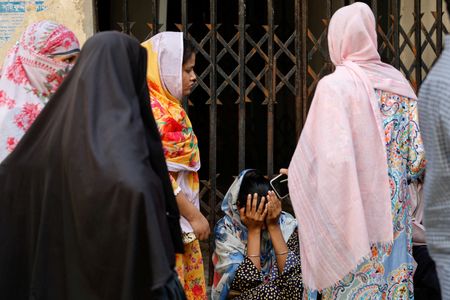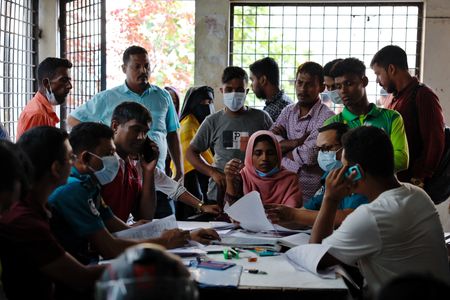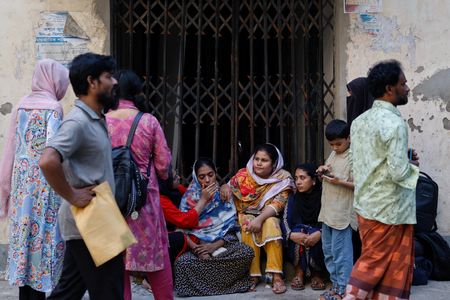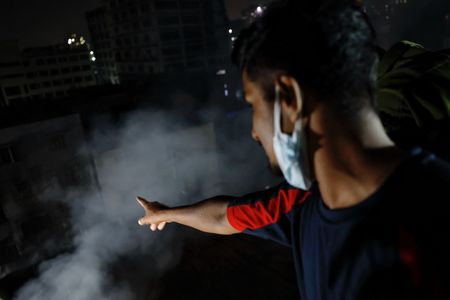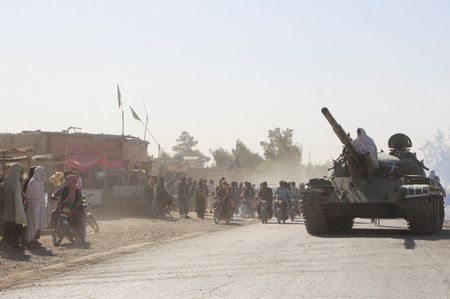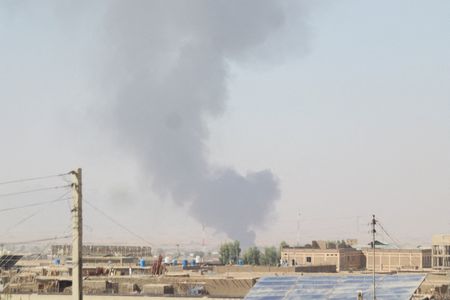By Ruma Paul
DHAKA (Reuters) -Toxic gas and a locked door that barred access to a roof were responsible for most of the deaths in a devastating fire in a Bangladesh garment factory and an adjoining chemical warehouse, a fire official said on Wednesday.
The disaster in Dhaka on Tuesday killed 16 and critically injured several more. It cast a spotlight on Bangladesh’s poor record on industrial safety, despite improvements following deadly incidents in 2012 and 2013 that drew global attention to unsafe working conditions.
Thick smoke rose from the charred structure as firefighters carried out cooling operations, a day after the blaze ripped through a four-storey building and an adjacent warehouse packed with chemicals.
MOST VICTIMS DIED FROM INHALING TOXIC GAS
“The victims could not escape because the roof door was locked,” said fire service official Talha Bin Zasim. “Most of them died from inhaling toxic gas, rather than burns.”
The fire was brought under control on Wednesday afternoon, nearly 27 hours after the deadly blaze broke out, as toxic gas and chemical fumes slowed down the operation.
Dozens of relatives waited outside the blackened building, some clutching photographs of those missing. Identification of the bodies, many of which were badly burned, is being carried out at Dhaka Medical College Hospital.
Mohammad Sohel said his brother Mohammad Robin, a worker at the factory, had been missing since Tuesday and he was desperate for information.
“Some tell us to go to the police, others to the hospitals, but no one gives us clear information. We are being misled again and again.”
The government has launched an inquiry to determine the cause of the fire and identify those responsible for safety lapses.
Many workers in garment factories nearby fell ill from inhaling the smoke that shrouded the site in the capital’s Mirpur area. Authorities later ordered all surrounding factories to shut down temporarily as a safety measure.
A fire official with a megaphone urged people to move back, shouting, “This is a very hazardous area. You should stay at least 300 metres away.”
GARMENT SECTOR A MAJOR PART OF BANGLADESH ECONOMY
Bangladesh is the world’s second-largest exporter of apparel. The sector supplies major retailers such as Walmart, Gap and H&M, employs 4 million people and generates about $40 billion a year, or more than a tenth of GDP.
The Bangladesh Garment Manufacturers and Exporters Association (BGMEA) said that the facilities affected by Tuesday’s fire were neither BGMEA members nor part of the formal, export-oriented garment sector. It urged authorities to strengthen oversight and take strict action against illegal warehouses operating outside regulatory control.
Many small factories and warehouses in Bangladesh operate with little oversight, though conditions in the garment industry have improved since the 2012 Tazreen Fashions fire and the 2013 Rana Plaza collapse that together killed more than 1,200 workers.
Fires are common in densely populated Dhaka, often caused by faulty wiring, gas leaks or unsafe storage of chemicals.
In 2021, a similar fire at a food processing factory killed 54, while in 2019, a fire in the capital’s old quarter killed at least 70.
(Reporting by Ruma PaulEditing by Clarence Fernandez and Frances Kerry)

